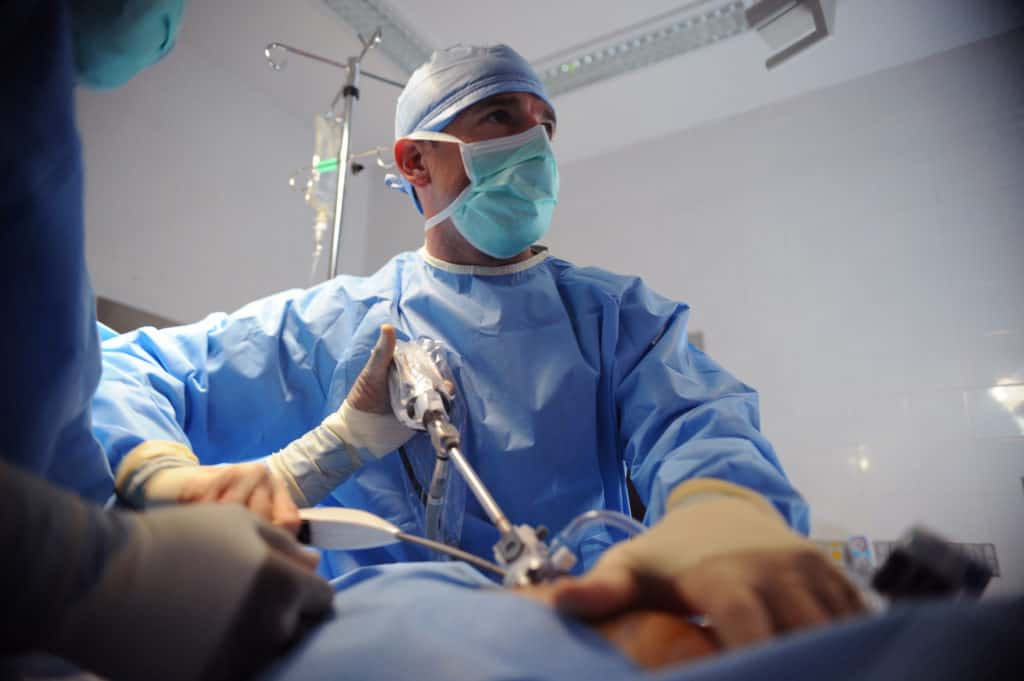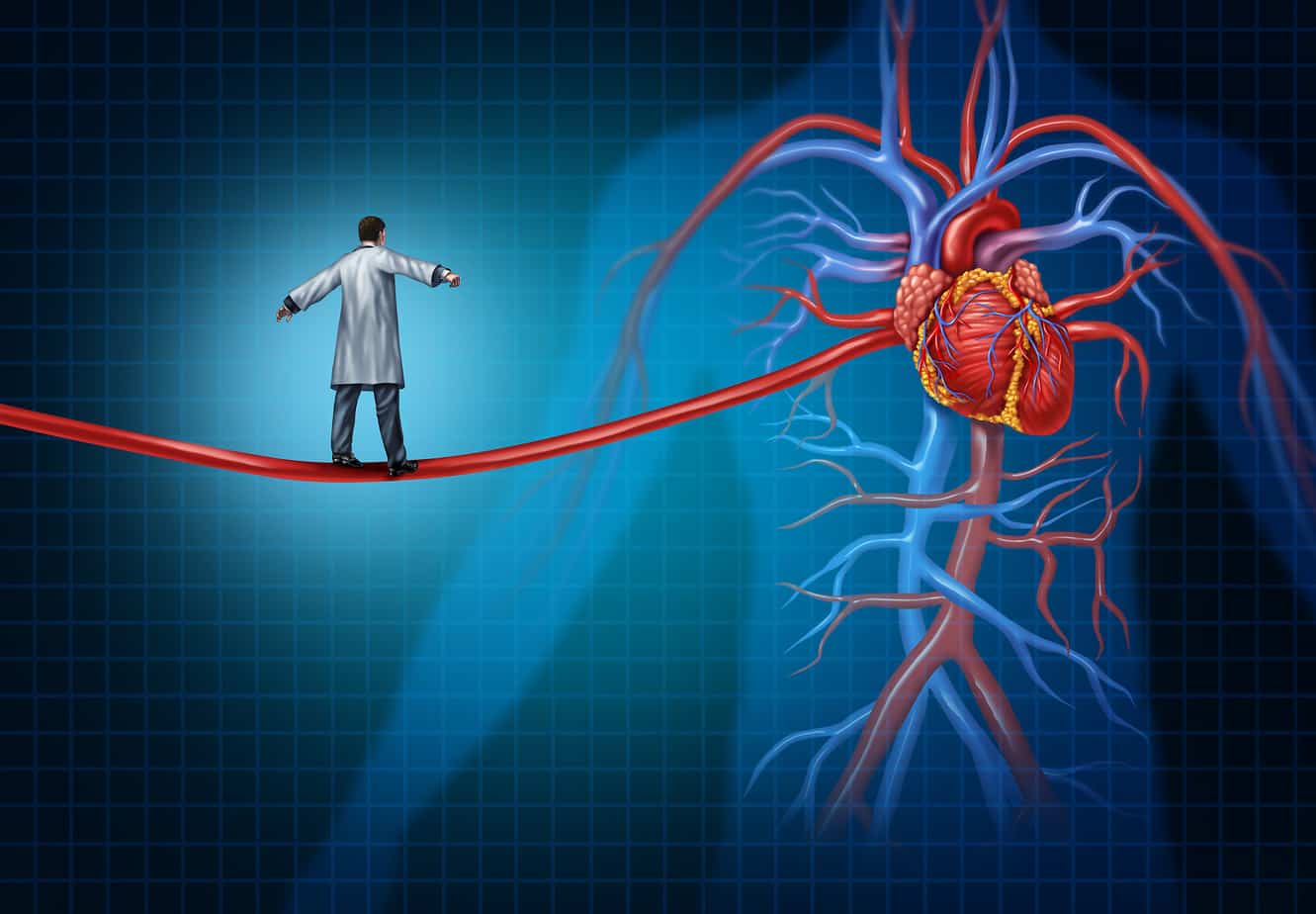Hernia mesh is a medical device commonly used in hernia repair surgeries to provide additional support and prevent a recurrence. Over the years, this implant has significantly reduced the rate of hernias returning by reinforcing the weakened area.
However, knowing the possible complications from hernia mesh failure is essential. Recognizing the signs and symptoms of hernia mesh failure can help patients detect potential problems and seek medical attention immediately.
Some common symptoms of hernia mesh failure can include pain, infection, and bulging in the affected area. Pain associated with mesh failure may be caused by excessive scar tissue, inflammation, nerve damage, or mesh shrinkage.
Infections can occur when bacteria build up on the implant, resulting in flu-like symptoms. Additionally, persistent bulging around the surgical site may indicate that the mesh no longer provides support.
It is crucial for patients who have undergone hernia repair surgery with mesh implants to monitor their symptoms and consult with their healthcare providers if they experience any concerning changes. Early detection and intervention are key to mitigating complications and successful recovery.
Hernia Mesh Failure Symptoms
Pain and Discomfort
Hernia mesh failure can often lead to pain and discomfort. The pain may be caused by excessive scar tissue, inflammation, nerve damage, or mesh shrinkage. In the case of a failed inguinal hernia repair, this can result in groin pain and testicular pain. Patients must pay attention to unusual or persistent pain after their hernia surgery.
Swelling and Redness
Swelling and redness around the hernia repair site could indicate hernia mesh failure. This may be due to the body reacting to the mesh or the mesh material causing an inflammatory response. Monitoring the surgical site for any noticeable changes in swelling or redness can help patients identify potential issues early on.
Bowel Obstruction
A bowel obstruction may occur as a result of hernia mesh failure. Patients experiencing nausea, vomiting, and an inability to pass gas or stools should consult with their doctor immediately. A bowel obstruction can be dangerous if left untreated, and in some cases, it may be necessary to remove or revise the hernia mesh to alleviate these symptoms.
Infection
Infections following hernia mesh surgeries can be a sign of mesh failure. Symptoms of infection may include fever, flu-like symptoms, and increased pain or redness at the surgical site. Hernia mesh infections can occur when bacteria build up on the implant, so patients must seek medical attention if they suspect an infection. Prompt treatment can help prevent further infection and mesh failure complications.
Causes of Hernia Mesh Failure
Mesh Material
One factor contributing to hernia mesh failure can be the mesh material itself. Some materials, such as polypropylene, are prone to degradation and shrinkage over time. This can lead to the mesh losing its integrity and failing to support the affected area adequately. Moreover, the mesh’s texture and configuration may also impact its effectiveness in the surgical repair of a hernia.
Mesh Rejection
Another potential cause of hernia mesh failure is the body’s rejection of the mesh implant. Mesh rejection, also known as a foreign body response, occurs when the immune system identifies the mesh as a foreign object and launches an attack against it. This immune response can lead to symptoms such as:
- Pain due to inflammation, nerve damage, or excessive scar tissue
- Infection from bacterial buildup on the mesh
- Flu-like symptoms
Mesh rejection may ultimately result in the breakdown of the mesh, necessitating its removal or revision surgery.
Improper Placement
Improper hernia mesh placement during surgery can also contribute to its failure. If the mesh is not adequately secured or positioned correctly, it may not provide the necessary support to prevent hernia recurrence. This can result in complications such as bulging, burning, constipation, sexual dysfunction, nausea, lethargy, and pain.
In summary, hernia mesh failure can result from a combination of factors, primarily related to the mesh material, the body’s rejection, and improper placement during surgery. Identifying the specific cause of failure is crucial in determining the appropriate course of action for the affected patient.
Types of Hernias Related to Mesh Failure
Inguinal Hernia
An inguinal hernia occurs when part of the intestine or fatty tissue protrudes through a weak spot in the abdominal wall, typically in the inguinal canal. This type of hernia is most common in men. When it comes to mesh failure, inguinal hernias are particularly significant since approximately 800,000 inguinal hernia repairs are performed each year in the U.S. The symptoms of mesh failure in inguinal hernias may include:
- Pain in the groin area
- Testicular pain
- Bulging near the hernia site
- Nausea
Ventral Hernia
A ventral hernia arises when a weak area in the abdominal wall allows an internal organ or tissue to push through. There are different types of ventral hernias, such as umbilical, incisional, and epigastric hernias. Mesh is frequently used to repair ventral hernias, which can also experience mesh failure. Symptoms of ventral hernia mesh failure may consist of:
- Pain or discomfort in the abdomen
- Burning sensations near the hernia site
- Constipation
- Lethargy
Femoral Hernia
Femoral hernias develop when part of an organ or tissue pushes through the femoral canal, which is located in the groin area near the thigh. They are more common in women than men. While less common than other types of hernias, mesh failure can still occur in femoral hernia repairs. Symptoms of femoral hernia mesh failure may include:
- Pain in the groin or thigh
- Inflammation and swelling near the femoral canal
- Numbness or tingling in the affected area
- Impotence or sexual dysfunction
It’s important to note that mesh failure symptoms can vary depending on the individual, the location of the hernia, and the type of mesh used. If any of these symptoms are present, it’s crucial for patients to seek medical attention to assess potential mesh complications and discuss potential treatment options.
Hernia Repair Surgery
Laparoscopic Surgery
Hernia repair surgery is an operation to treat a hernia, a condition in which part of an organ bulges through tissue. One type of hernia repair surgery is laparoscopic surgery. In this minimally invasive procedure, small incisions are made through which a lighted scope and surgical instruments are inserted. The surgeon then repairs the hernia by pushing the protruding organ back into place and using mesh to reinforce the weak area.
Laparoscopic hernia repair surgery offers several benefits, such as:
- Shorter recovery time
- Less pain and discomfort after surgery
- Smaller scars
However, it is unsuitable for all types of hernias or patients with certain medical conditions.
Open Surgery
Another method of hernia repair surgery is open surgery, also known as herniorrhaphy or hernioplasty. The surgeon makes a larger incision in the abdomen above the hernia in this procedure. The protruding intestine is pushed back into the abdomen, and the opening in the muscle wall is repaired. Sometimes, the weak area is reinforced with mesh, known as hernioplasty.
Although open surgery often has a longer recovery time and may result in more pain and scarring, it may be necessary in specific cases or for certain types of hernias. For example, open surgery might be preferred if a patient has had previous abdominal surgeries or if the hernia is large or complex.
In both laparoscopic and open hernia repair surgeries, using mesh has significantly reduced the chances of hernia recurrence down to the low single-digits, compared to a 25-50% recurrence rate with suture-only repairs in the past. However, it’s essential to be aware of potential hernia mesh failure symptoms, such as:
- Bulging
- Burning
- Constipation
- Impotence and sexual dysfunction
- Nausea
- Lethargy
- Pain
Suppose any of these symptoms occur after hernia repair surgery. In that case, it’s crucial to consult a medical professional for diagnosis and potential treatment options, including removal of the mesh implant or revision surgery.

Complications Related to Mesh Failure
Hernia Recurrence
One of the main complications related to mesh failure is hernia recurrence. Hernia repair surgery using mesh has significantly decreased the chance of hernia recurrence to low single digits. However, a failed mesh may cause the hernia to return. This can result in several symptoms, such as bulging, pain, and discomfort.
Adhesions
Another possible complication from hernia mesh failure is the development of adhesions. Adhesions are bands of scar tissue that form between organs and tissues, leading to pain and potentially requiring additional surgeries. Adhesions may occur due to inflammation, excessive scar tissue, or mesh shrinkage. Symptoms of adhesions may include:
- Pain or discomfort
- Swelling and inflammation
- Nausea and vomiting
It is crucial to consult a medical professional if these symptoms arise after hernia mesh surgery, as early intervention can prevent further complications.
Scar Tissue Formation
Failed hernia mesh can also contribute to excessive scar tissue formation. Scar tissue can cause pain and discomfort, restricting the natural movement of surrounding tissues and organs. Additionally, it may lead to nerve damage and further complications such as:
- Pain in the groin or testicular area, especially for inguinal hernia repairs
- Nausea and lethargy
- Loss of appetite and fever, in more severe cases
It is important to recognize the signs and symptoms of hernia mesh failure and its related complications to seek proper medical attention and ensure the best possible outcome for the patient.
Diagnosis and Treatment of Mesh Failure
Imaging Techniques
Diagnosing hernia mesh failure typically begins with a physical examination by a doctor. However, imaging tests may be ordered to assess the issue if the failure is not immediately apparent. Common imaging techniques used in the diagnostic process include:
- X-rays
- Ultrasound
- CT scans
- MRI scans
These imaging tests can help identify complications such as mesh migration, shrinkage, or adhesion to surrounding tissues. They can also help determine the issue’s severity and guide the most appropriate treatment plan.
Surgical Intervention
Once the diagnosis confirms mesh failure, surgical intervention may be necessary to address the issue. The primary goal of the surgery is to remove the problematic mesh and repair the hernia. The specific surgical approach may vary based on the nature and extent of the complications.
There are two main types of surgery to consider when dealing with mesh failure:
- Laparoscopic surgery: This minimally invasive approach involves making small incisions in the abdomen and using specialized instruments to remove the mesh. Laparoscopic surgery can offer a faster recovery time and reduced scarring compared to open surgery.
- Open surgery: involves making a larger incision to access the affected area directly. Open surgery might be required in cases where there is significant adhesion between the mesh and surrounding tissues or if the hernia is large and complex.
In both surgical approaches, addressing any associated complications such as infection, bowel obstruction, or abscesses is crucial. Additionally, the surgeon may choose to use a different type of mesh or repair method to avoid the recurrence of hernia or mesh complications.
To summarize, diagnosing and treating hernia mesh failure involves imaging techniques to identify the issue and surgical intervention to correct it. Both laparoscopic and open surgery options are available, and the specific approach is based on the individual patient’s situation and the extent of mesh complications. The primary aim is to remove the problematic mesh, repair the hernia, and prevent future complications.
Preventing Mesh Failure
Proper Surgical Technique
It is crucial to ensure that proper surgical techniques are employed during the procedure to prevent hernia mesh failure. Utilizing appropriate methods significantly reduces the likelihood of complications and increases the rate of successful repairs. Some key aspects of the proper surgical technique include:
- A thorough pre-surgical assessment considers the patient’s medical history, existing health conditions, and the type of hernia present.
- Ensuring the right fit and placement of the mesh by carefully measuring the hernia defect and selecting the appropriate mesh size for reinforcement.
- Proper handling and sterilization of the mesh and surgical instruments reduce the risk of contamination and subsequent infection.
- Close attention to suture placement to achieve adequate tension and secure mesh fixation without causing undue stress on surrounding tissues.
Mesh Material Selection
Choosing the right mesh material contributes significantly to the success of hernia repair surgery and the prevention of mesh failure. Factors to consider while selecting the appropriate mesh material include the patient’s specific needs, the nature of the hernia, and the desired outcomes. Some common mesh materials and their properties are:
- Polypropylene: A widely-used synthetic material known for its strength and durability. It promotes tissue integration and has a low risk of complications but may cause pain for some patients due to its rigidity.
- Polyester: Another synthetic material with good strength and a slightly lower risk of infection compared to polypropylene. However, it can lead to discomfort or pain due to its stiffness.
- Biological: Made from animal tissues, such as porcine or bovine sources, these meshes are more flexible and offer a lower likelihood of complications but may not be as durable as synthetic alternatives.
By considering the needs and circumstances of each patient, selecting the appropriate mesh material, and employing proper surgical techniques, healthcare professionals can significantly reduce the incidence of hernia mesh failure while ensuring a more successful, comfortable recovery for patients.
FAQs
What are the symptoms of hernia mesh failure?
Some of the common symptoms of hernia mesh failure include:
- Pain: This can be caused by excessive scar tissue, inflammation, nerve damage, or mesh shrinkage. A failed inguinal hernia repair may cause groin pain and testicular pain.
- Infection: Hernia mesh infections happen when bacteria build up on the implant, causing flu-like symptoms such as fever.
- Bowel obstruction: Symptoms include nausea, vomiting, and inability to pass gas or stools.
- Mesh migration or shrinkage: This can lead to adhesions, bowel obstruction, or abscesses (a pocket of pus).
- Mesh rejection: Severe swelling at the surgical site may be a sign of mesh rejection.
Why is mesh used in hernia repairs?
Mesh is used in hernia repairs to support weakened or damaged tissue. Decades ago, hernia repairs were performed by simply suturing the hernia closed, resulting in 25-50% of hernias returning. Using mesh reduced the chance of hernia recurrence to the low single digits.
What materials are used to make surgical mesh?
Most surgical mesh devices currently available are constructed from synthetic materials like polypropylene. Many different mesh materials and configurations have been developed for specific surgical procedures since the introduction of polypropylene mesh in the middle of the 20th century.



